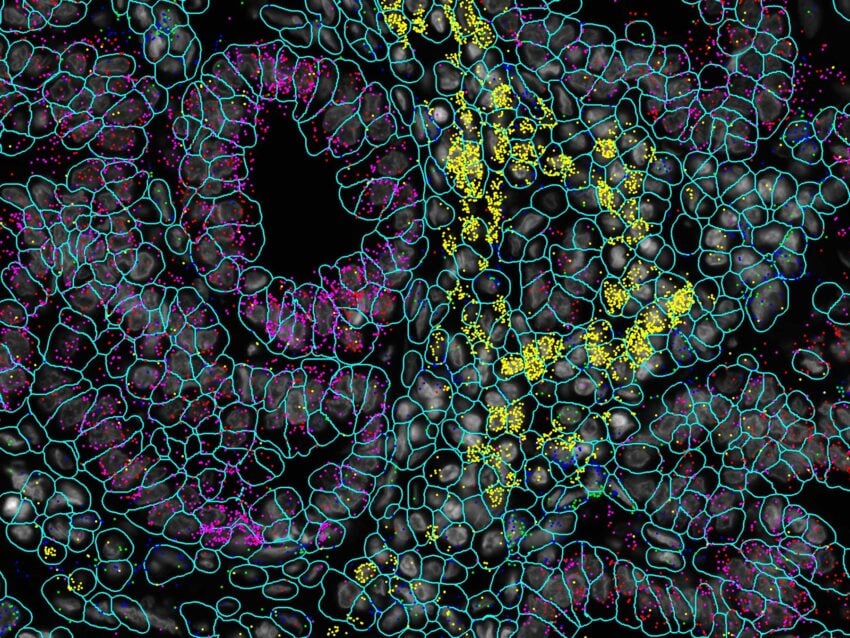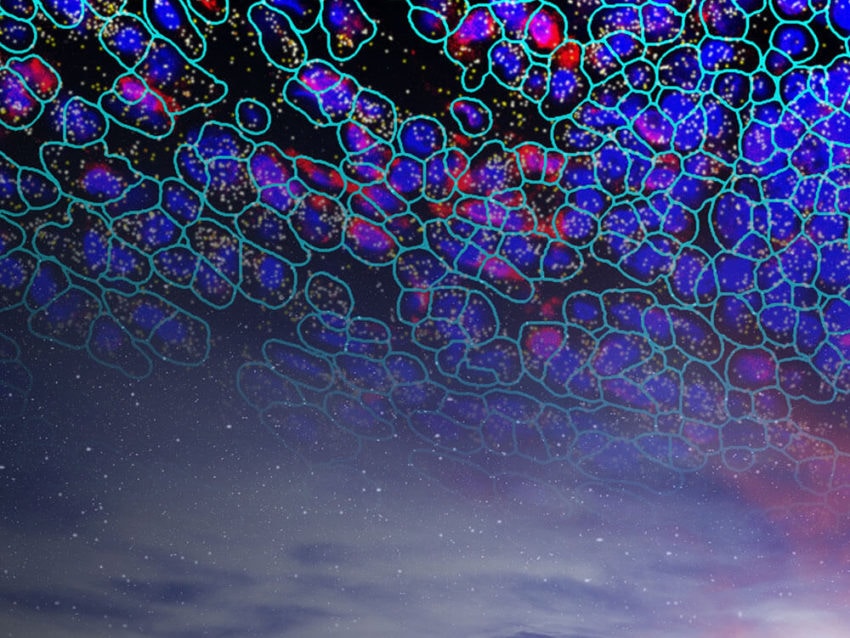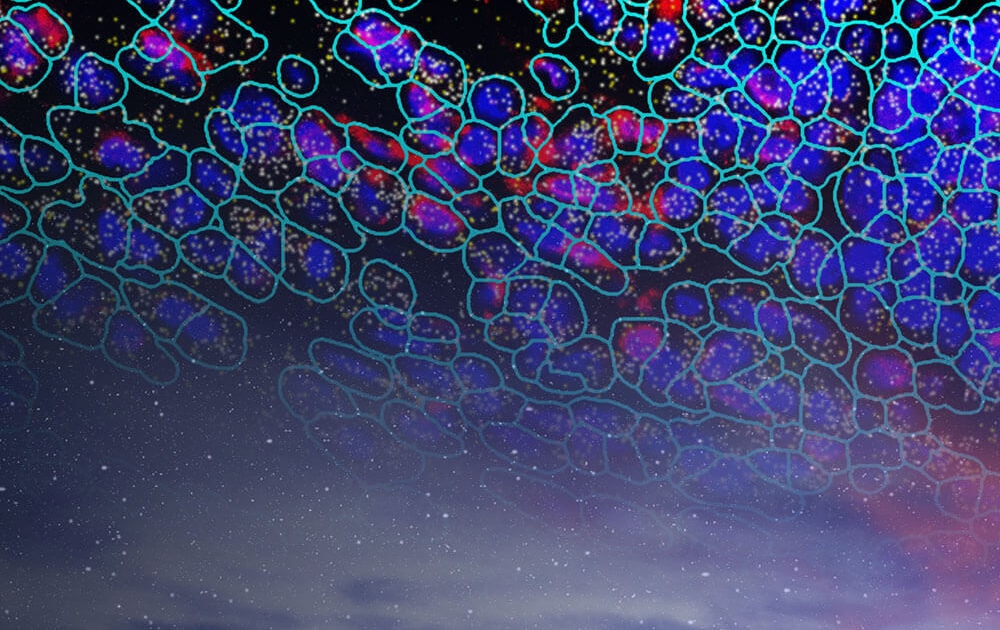
CosMx™ SMI for Single-Cell Imaging
Elevate your single-cell research with CosMx™ SMI
A Spatial Multiomics Single-Cell Imaging Platform
CosMx SMI is the first high-plex in situ analysis platform to provide spatial multiomics with formalin-fixed paraffin-embedded (FFPE) and fresh frozen (FF) tissue samples at cellular and subcellular resolution. CosMx SMI enables rapid quantification and visualization of up to 1,000 RNA and 64 validated protein analytes. It is the flexible, spatial single-cell imaging platform that will drive deeper insights for cell atlasing, tissue phenotyping, cell-cell interactions, cellular processes, and biomarker discovery.







Technical Overview
Get single-cell gene expression in challenging FFPE tissues with spatial context.
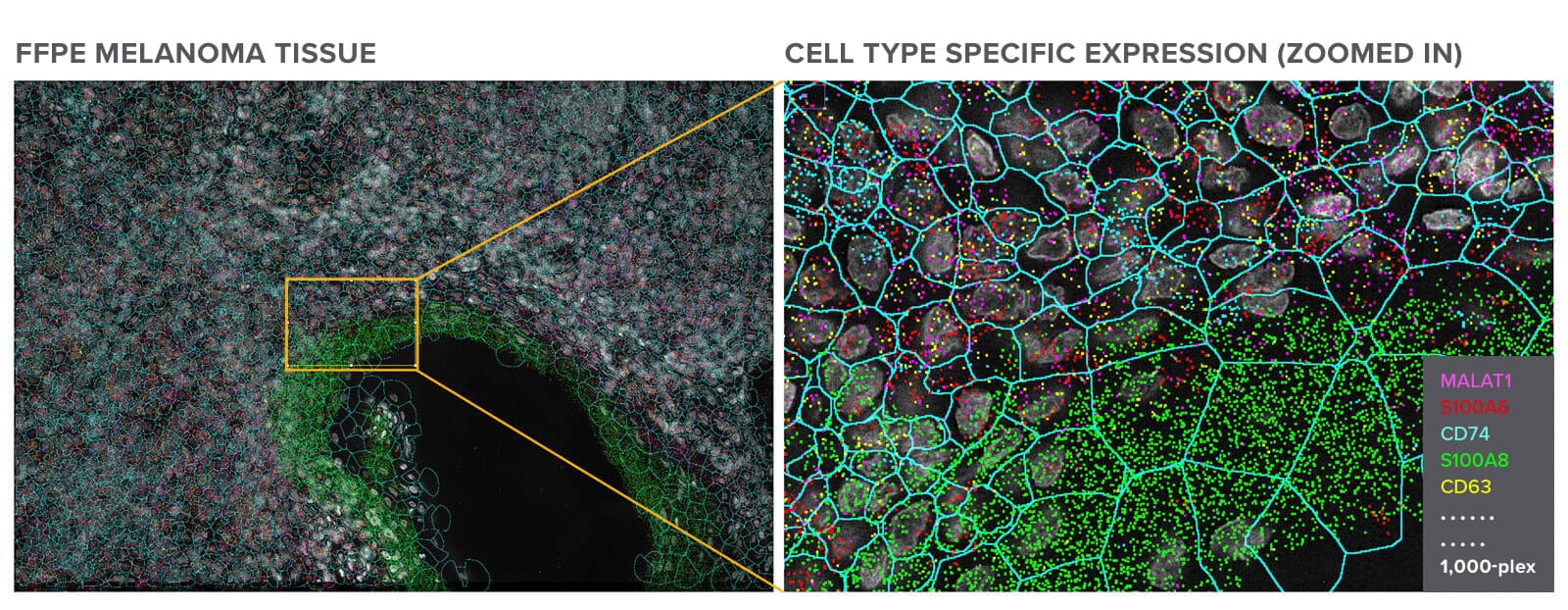
Melanoma FFPE tissue probed with 1000-plex RNA panel to detect spatial localization of transcripts in intact tissue.
Detect low expressing genes with highly sensitive CosMx SMI
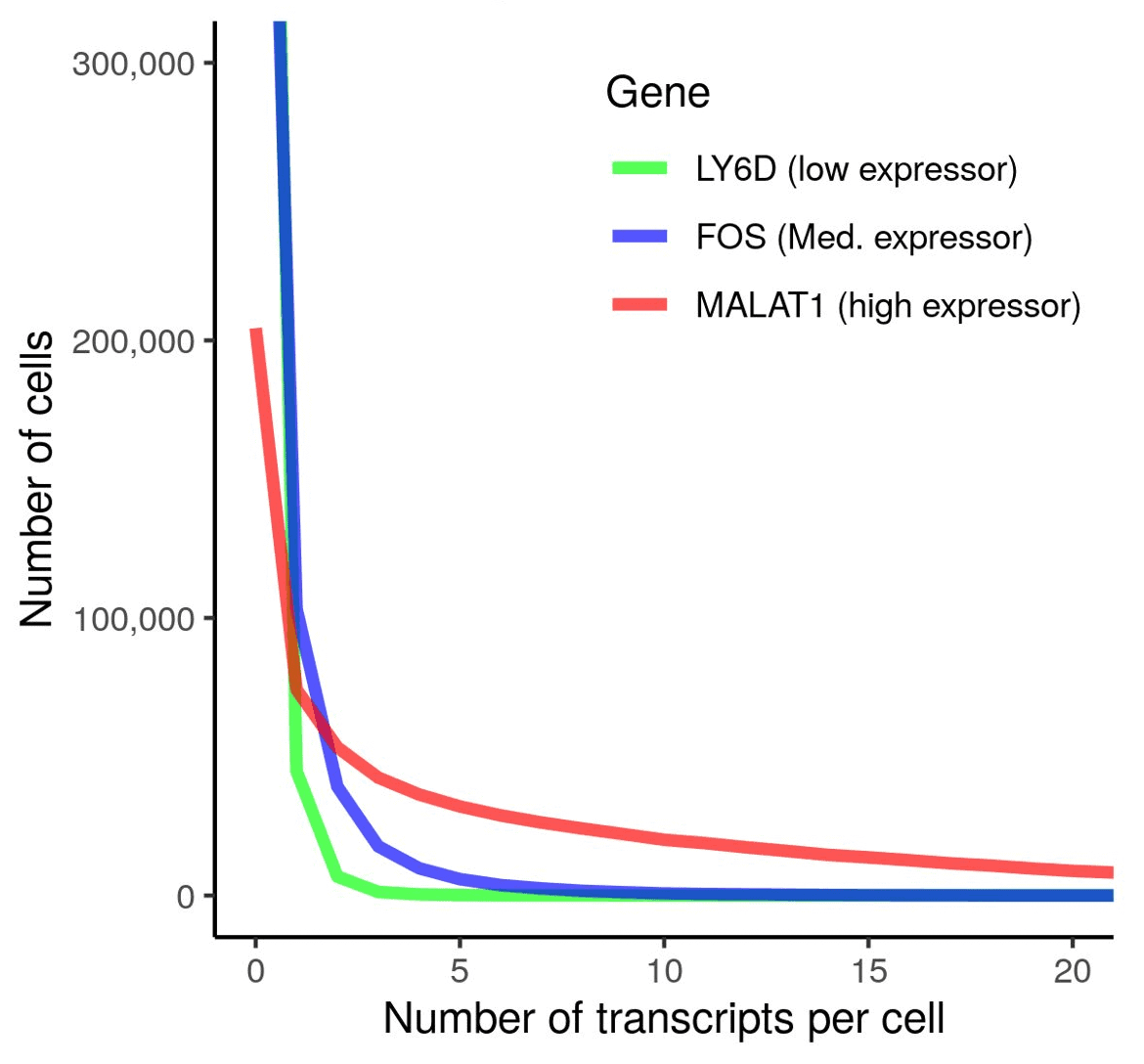
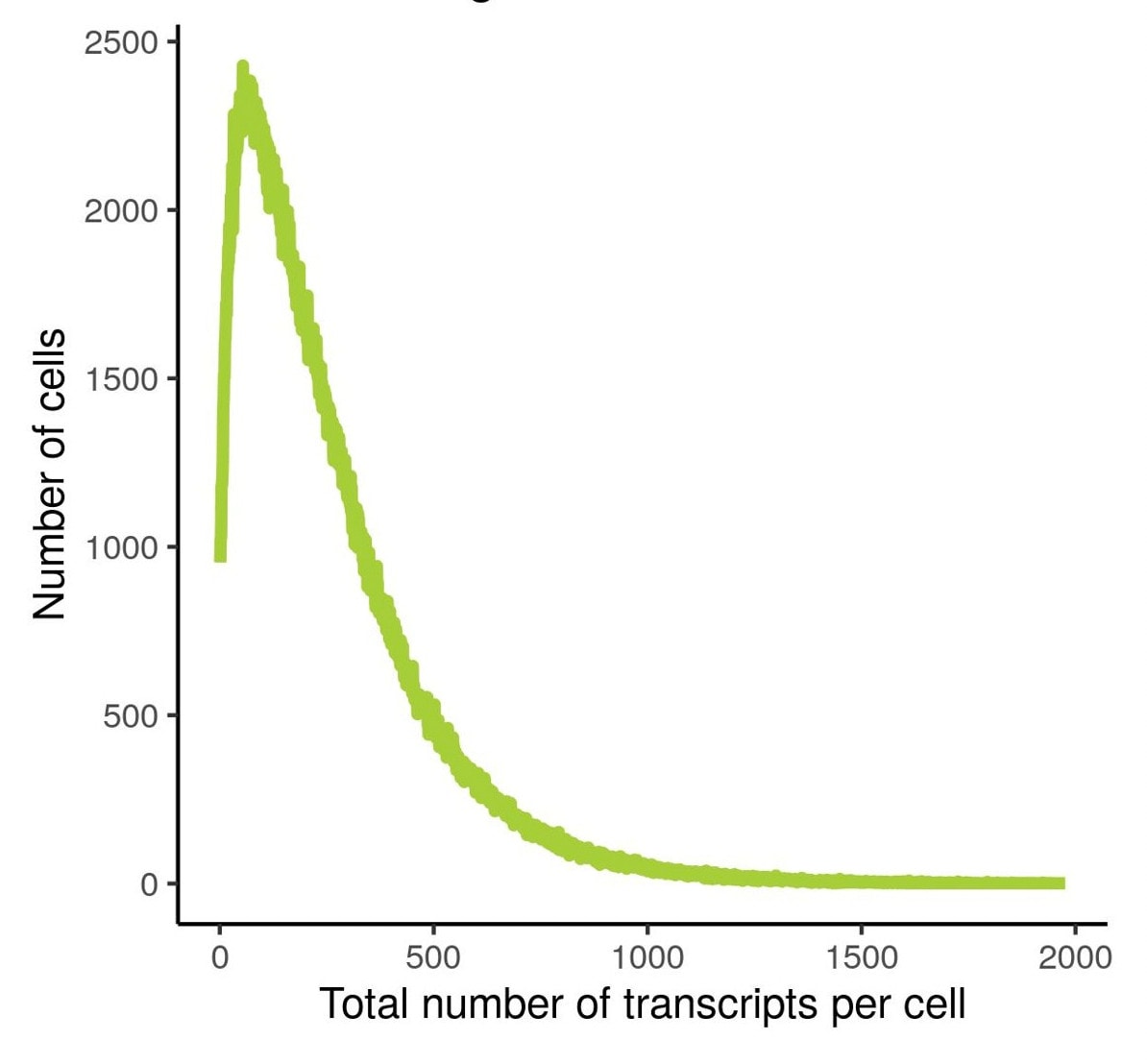
| Genes | Expression level | Copies per cell (Max.) |
|---|---|---|
| MALAT1 | High | 256 |
| FOS | Medium | 40 |
| LY6D | Low | 24 |
Total number of cells analyzed = 800,327
Total transcripts detected = 259,604,214
Number of transcripts / cell (Max) = 2000
Number of transcripts / cell (Mean) = 257
Shown here are the transcripts detected per cell in non-small cell lung cancer (NSCLC) FFPE tissue probed with a 1000-plex gene panel (left) and total transcript distribution in the NSCLC tissue (right). CosMx SMI offers high sensitivity and high dynamic range to capture low copy number gene transcripts at the single cell level.
Multi-modal approach for true single-cell segmentation
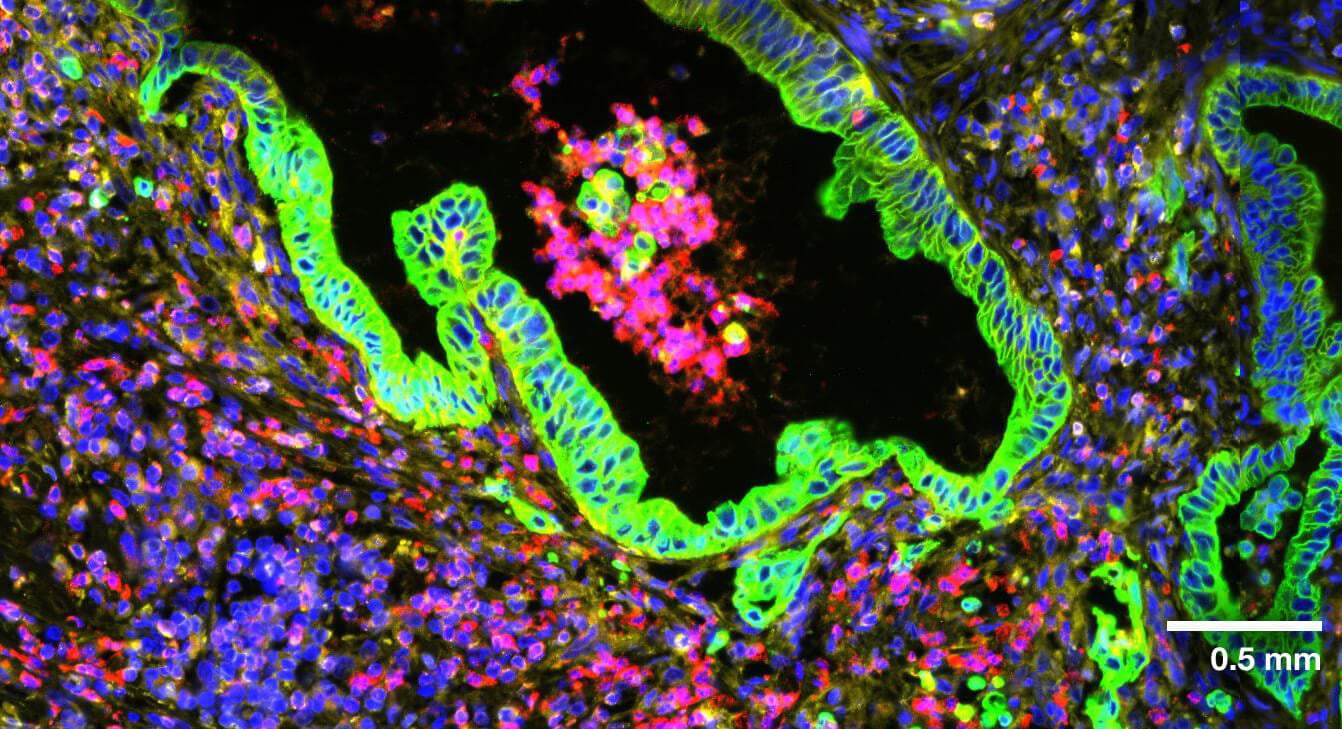

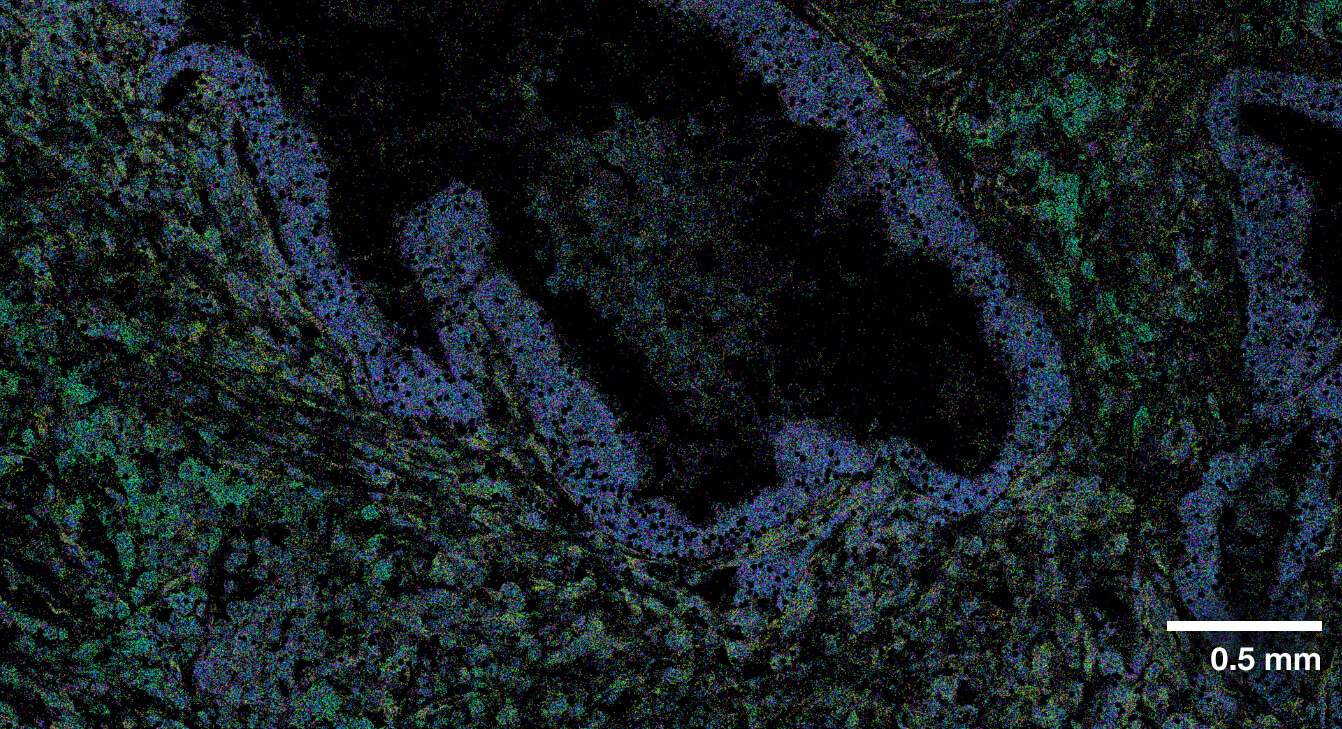
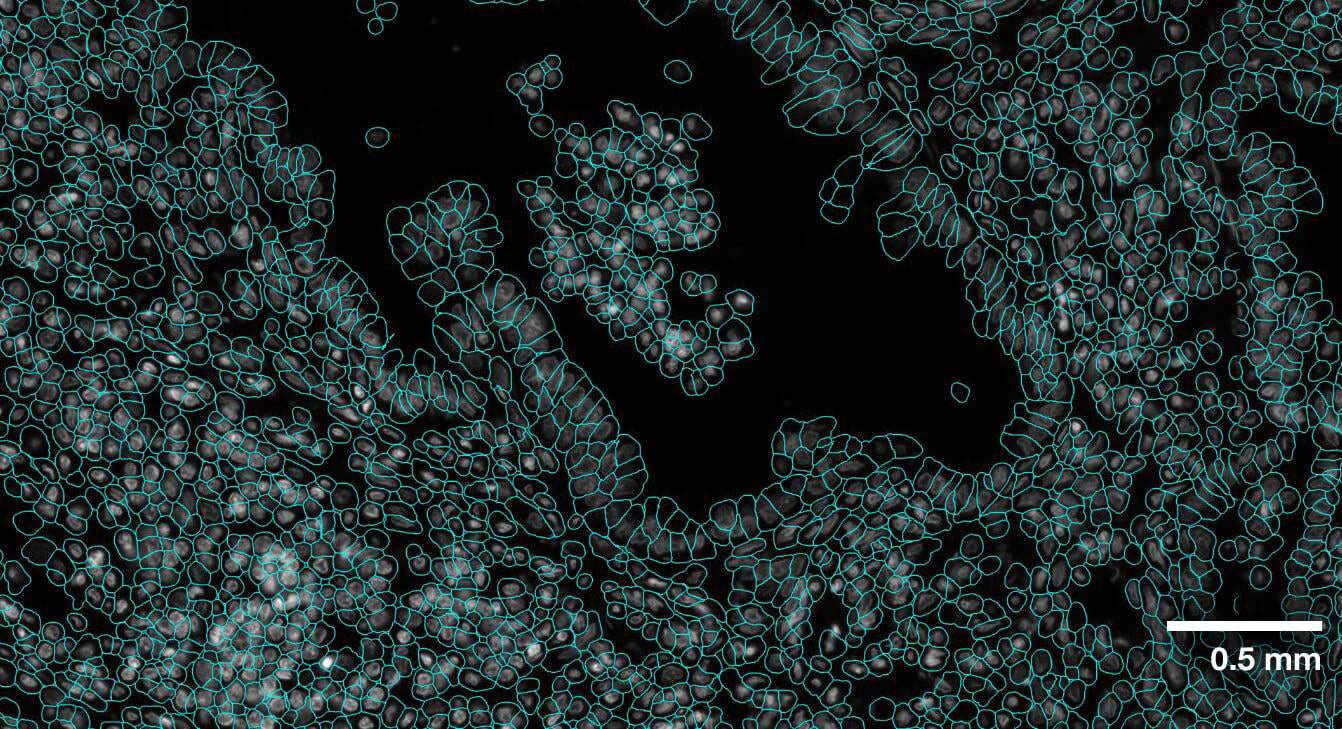
Multi-modal cell segmentation process provides accurate cell boundaries detection. CosMx cell segmentation uses cell membrane and morphology marker protein images, machine-learning augmented cell segmentation algorithm and transcript-based segmentation refinement to achieve precise single-cell segmentation in morphologically intact tissue.
How it works
CosMx SMI is an integrated system with mature cyclic fluorescent in situ hybridization (FISH) chemistry, high-resolution imaging readout, interactive data analysis and visualization software.
Easy Sample Preparation, Compatible with Any Sample Type

Automated Cyclic in situ Hybridization Chemistry

Applications
CosMx Spatial Molecular Imager is the most flexible and robust spatial single-cell imaging platform for:
- Cell Atlas and Characterization: Define cell types, cell states, tissue microenvironment phenotypes, and gene expression networks within spatial context.
- Cell-cell Interaction: Understand biological process controlled by ligand-receptor interactions.
- Spatial Biomarkers: Quantify change in gene expression based on treatment and identify single-cell subcellular biomarkers with spatial context.

Interested in learning more about CosMx SMI for Single-Cell Imaging?
Contact our helpful experts and we’ll be in touch soon.

Posters
Path to the holy grail of spatial biology: Spatial single-cell whole transcriptomes using 6000-plex spatial molecular imaging on FFPE tissue – AACR 2023
Single cell spatial molecular imaging of 76-plex proteins in clinical cancer samples in response to personalized treatment – AACR 2023
A complete pipeline for high-plex spatial proteomic profiling and analysis on the CosMx™ spatial molecular imager and AtoMx™ spatial informatics platform – AACR 2023
Spatial transcriptomic profiling of the human and mouse retina prepared with CryoJane Tape Transfer System using GeoMx and CosMx spatial analysis – AACR 2023
Spatial insights into tumor immune evasion illuminated with 1000-plex RNA profiling with CosMx Spatial Molecular Imager – AACR 2023
A spatially-resolved, single-cell analysis of human olfactory cleft mucosa highlights the transcriptional dysregulation in sustentacular cells with SARS-CoV-2 viral load
Single-Cell Imaging FAQs
Why is a single cell important?
Cells are a fundamental unit of life. A comprehensive understanding of how cells organize themselves in different layers of information to form tissues is not yet fully achieved. Further, no matter how seemingly homogeneous a tissue might appear, it contains a diverse population of cells, all of which represent different manifestations of that tissue type. Learn more »
Why is single-cell analysis important?
Single-cell analysis encompasses the study of genomics, transcriptomics, proteomics, and metabolomics at single-cell resolution. As cells are the organism’s building blocks, they are organized in different layers of information to form tissues, and the position of each cell within a tissue has a physiological or morphological function. Learn more »
What is single-cell technique?
Single-cell techniques are advances in single-cell manipulation and amplification that have enabled the study of genomics, transcriptomics, and epigenomics at the level of a single cell. Learn more »
What is single-cell spatial transcriptomics?
Analysis of mRNA expression profile with spatial context at the level of a single cell is known as single-cell spatial transcriptomics. Each cell has a unique transcriptomic fingerprint as gene expression patterns can be heterogeneous even amongst similar cells in both standard and abnormal cell states. Learn more »
What is single-cell analysis used for?
Single-cell analysis can provide data on cellular phenotypes by studying the effects of genomic alterations, gene expression, and environmental influences at the level of a single cell. Learn more »

